
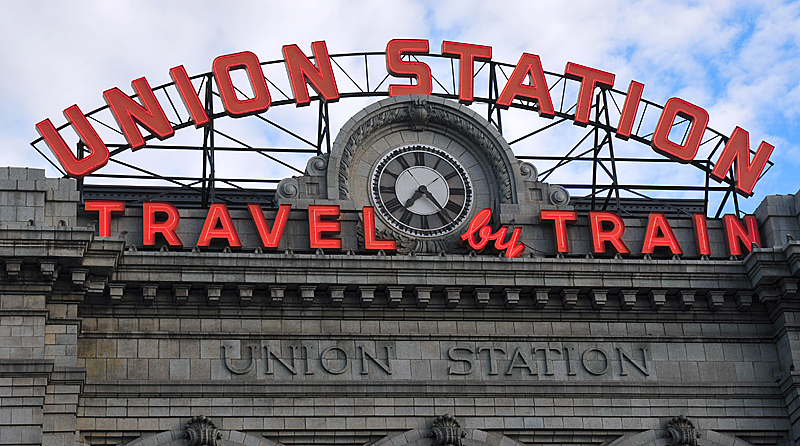





In my youth, I was already a steam fan, but by the time I had means to explore and photograph, steam was about just about finished in the United States. My first solo trip far from home was to a new job in Houston after I finished my education. Where could still I find steam along the way?
Trains Magazine regularly documented the sad news of the demise of steam operations throughout the nation. One of the last holdouts was the Moscow, Camden & San Augustine in the east Texas "Piney Woods," but I remembered reading that not long ago they had bought their first diesel, a GE 44 tonner. The steamers were no longer needed.
I remembered reading about this little short line in Beebe's Mixed Train Daily. The single photo illustration by Charles Clegg showed a tall-stacked 2-8-0, Number 6, with an old style headlight and high pilot smoking it up with the daily (except Sunday) mixed train to Moscow. Beebe's colorful prose spoke intriguingly of MC&SA's other engine, the "Panama Mogul" - so called because it had started its long useful career on the Panama Railroad.
Even though I was too late to see them in steam, I had reason to believe that the locomotives were still in Camden and indeed they were. What I saw when I arrived in the little W. T. Carter & Brother's company, lumber mill town was amazing. Not only did I find Beebe's far famed Panama Mogul, MC&SA Number 201, and old Number 6, but also there were eight lumber company steam locomotives and a steam crane stored on the property. Old wooden log cars complete with link-and-pin couplers and lots of spare trucks were there too.
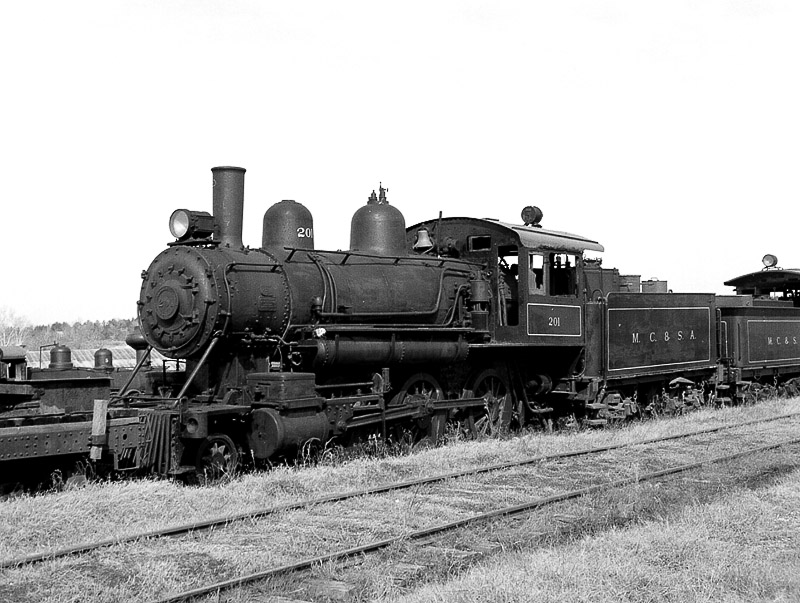
I found the Panama Mogul Beebe had written about -- looking a bit worse for wear.
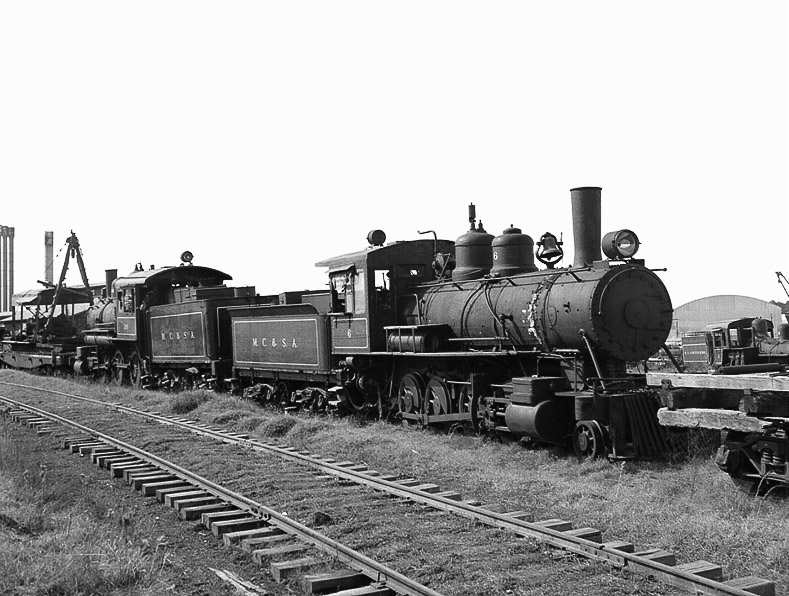
MC&SA Number 6, the engine in Mixed Train Daily, was there too, but the headlight had been changed.
W. T. Carter & Bro., in addition to owning the common carrier MC&SA, had an extensive lumber railroad. The rails into the woods were gone by then, but the locomotives were still there. Some clearly had not been used in many years: as evidence, there were two Number 1s and two Number 2s. In all I saw four Moguls, two Mikados, a Prairie, a Consolidation a Ten-wheeler and a Shay.
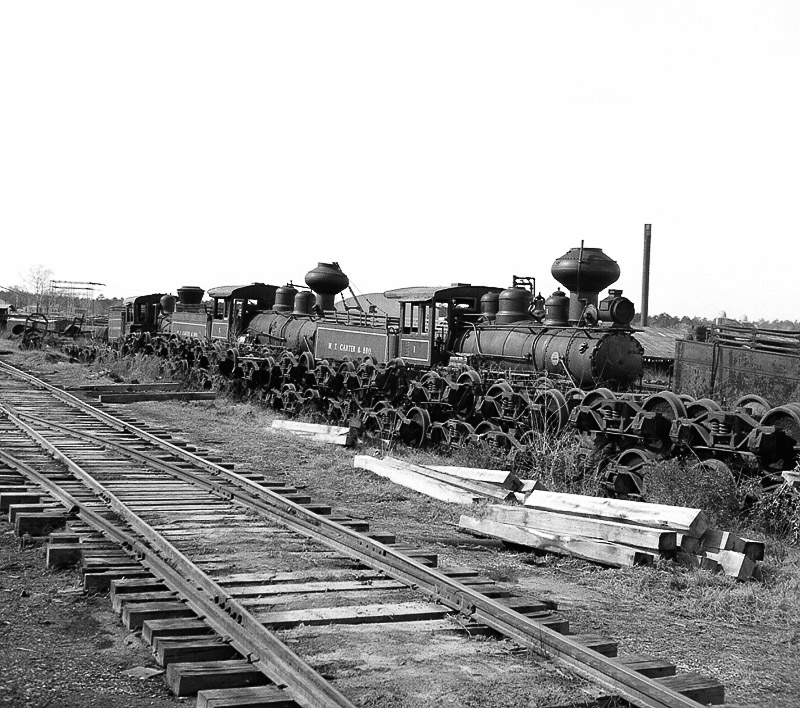
There were eight W. T. Carter engines on the property.
There was a lot of rust, and a bit of vandalism, but overall, they were a comely lot. Some had Rushton stacks; Mogul Number 2 had a flanged stack. It was thrilling to walk among these relics huddled together in the back pasture of the lumber mill, but I couldn't help feeling a sense of gloom. Surely they were all domed -- it could only be a matter of time until they, like so many other fine engines, were recycled into bailing wire.
Less than a year later, I learned from Trains Magazine that, when the new diesel required extensive servicing, one of the steamers would be used on the mixed train. For the month of January 1965, W. T. Carter 2-8-2 Number 14 was pulled out of the pasture to do the honors. It would be a farewell performance, and I was there to witness it and ride to Moscow and back.
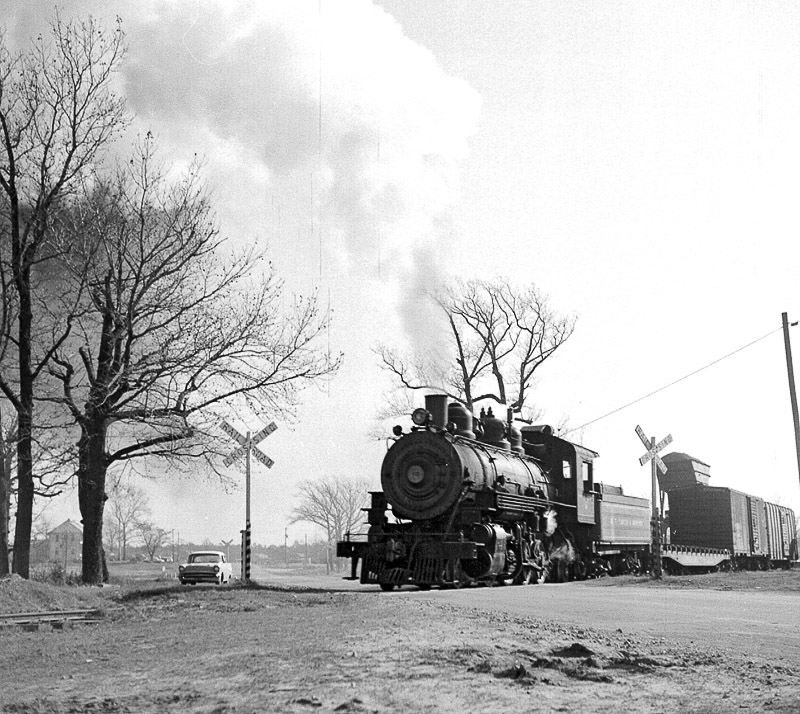
Making up the train -- that is my 1957 Chevy in the background.
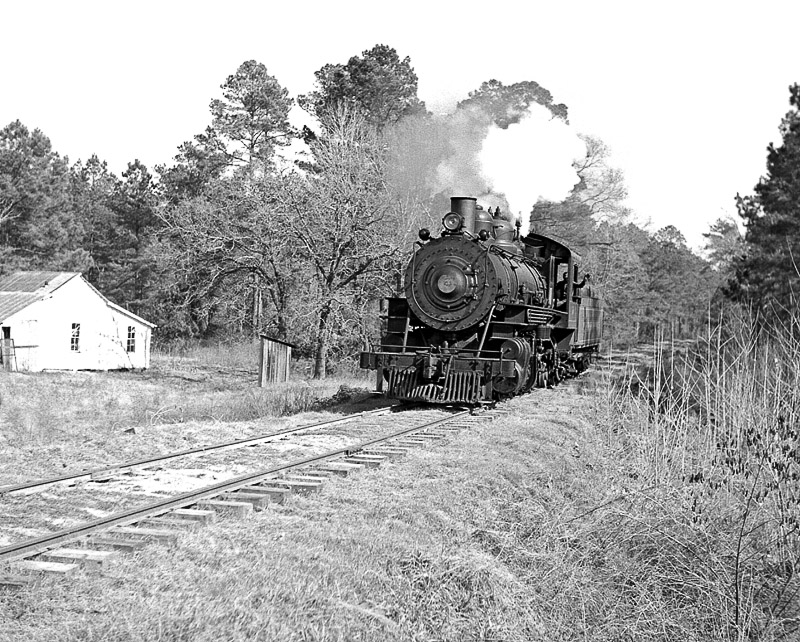
A friendly wave from the fireman.
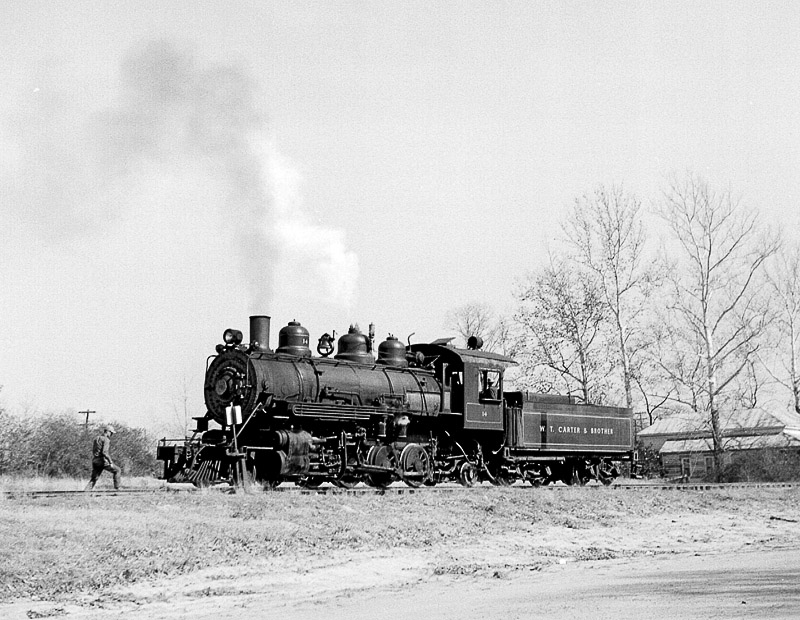
W. T. Carter Number 14 was built by Baldwin in 1923.
The railroads' sole passenger car was combine 512 built in 1898 for the Long Island Rail Road. The MC&SA acquired it in 1927. The car had been painted red with a green roof, but it took close examination to see the colors in the scant paint remaining.
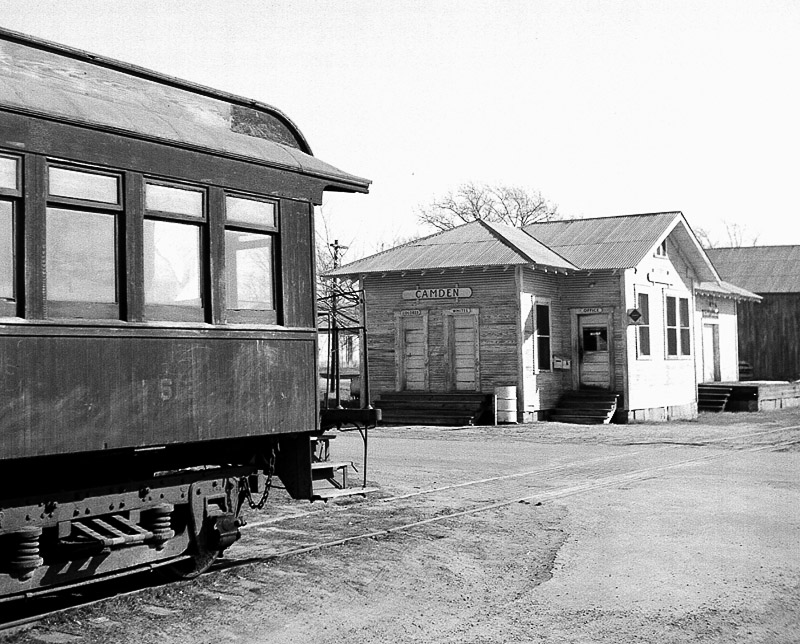
Both the little white Camden Station and the former Long Island combination car needed a little paint.
Train No. 1 left precisely on the 10:40 am advertised. I well remember this detail because I was standing in front of the engine, taking a nice 3/4 shot, when I heard the familiar two blasts of the whistle, and the train started up. To locals I must have appeared to recreate the old LIRR's advertising image of the dashing commuter when I caught the rear platform of the combine.
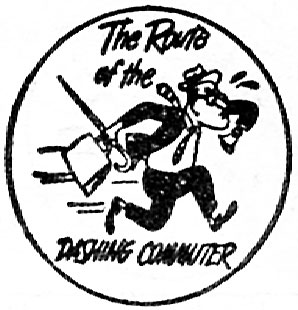
Our train soon reached Moscow - it is only a distance of seven miles. There a man and his young son got off the train to join the wife and mother who had arrived with the family car. Our venerable conductor saw the two leaving and was clearly alarmed. He grabbed his black metal strong box and chased them across a field. He confronted them there and insisted that they had paid for a round trip fare, and if they were not going to return to Camden with us, they must be reimbursed. The conductor was adamant; the man tried to refuse but finally had to relent and accept his refund. The round-trip fare was an astonishing $.50.
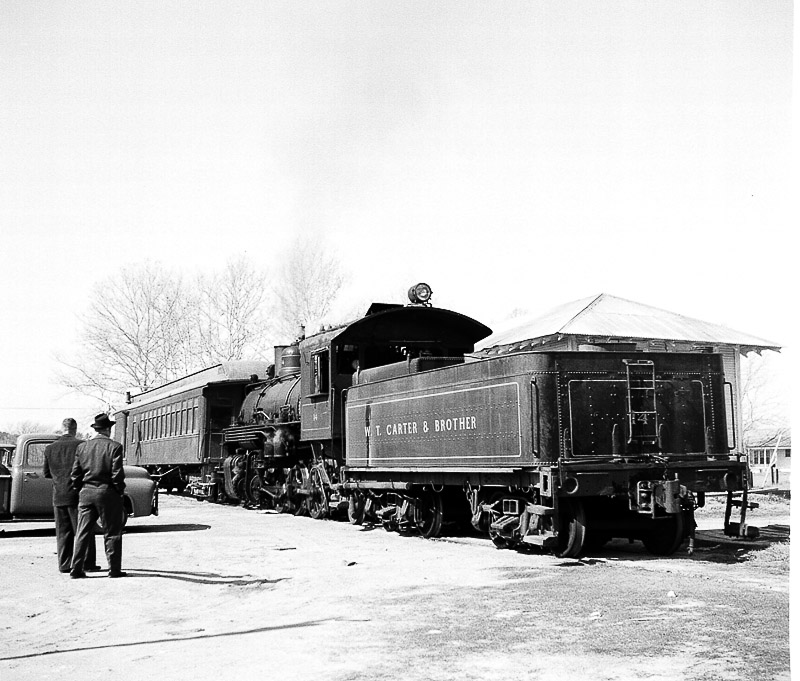
Arrival in Camden -- Number 14 was just a little too long for the Moscow turntable, so it had to run backward.
I returned several years later to find all the engines still there, although a bit rustier, with a few more parts missing and overcome by weeds.
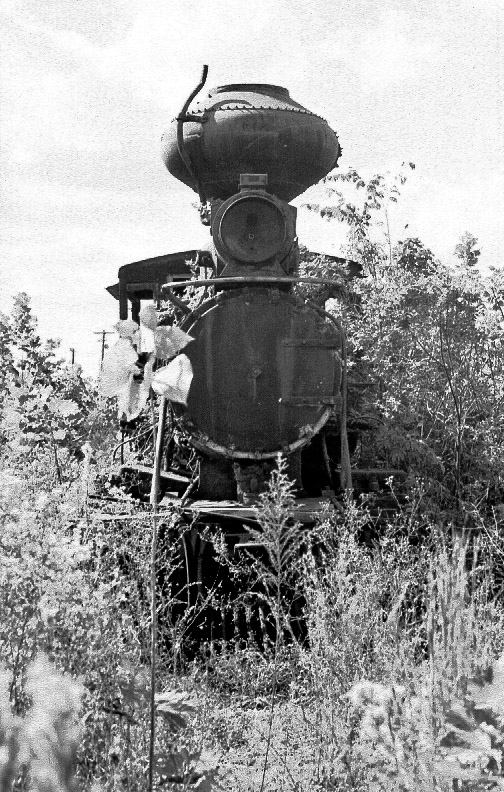
After a few years, the weeds had taken over W. T. Carter & Bro. Number 1.
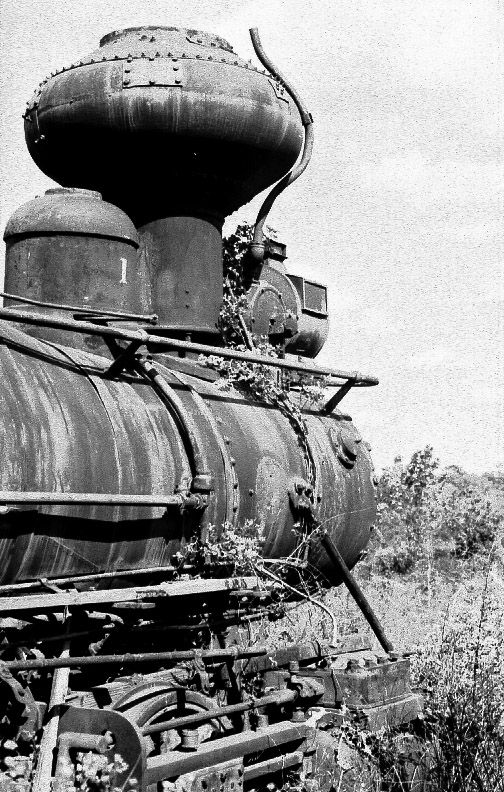
Mogul Number 1 was built in 1906.
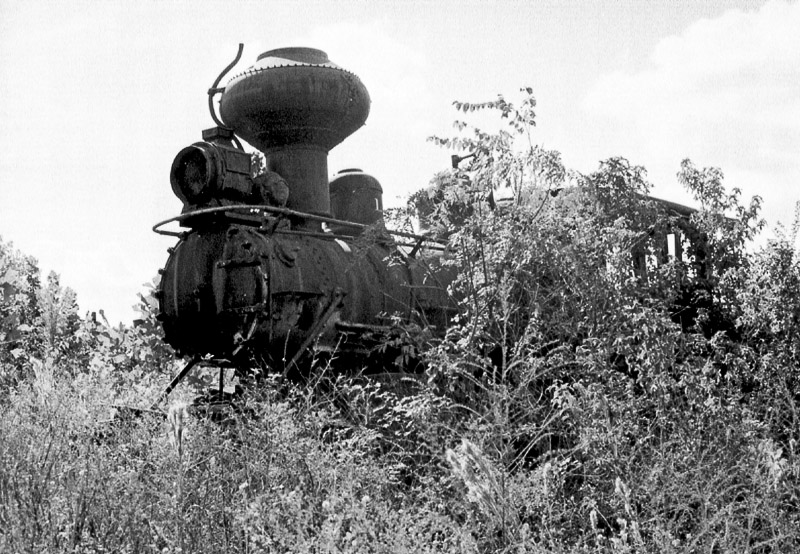
Elsewhere on the property was a 2-8-2 also carring the Number 1.
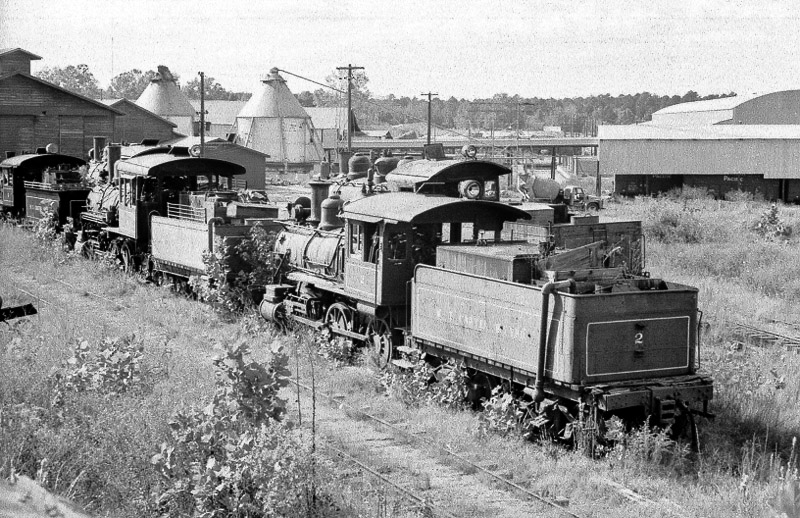
Mogul Number 2 with a distinctive flanged stack.
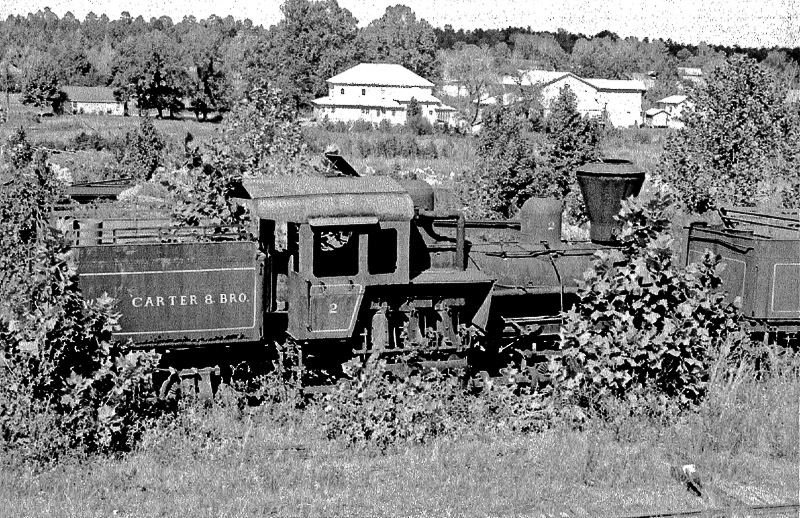
Shay Number 2, Lima 1907, showing quit a bit of rust at the bottom of the tender.
Despite my fears, not one of these ten engines was scrapped. Even the steam crane, the Camden depot and the old combine survive to this day. The engines were scattered to many destinations in Texas and Arkansas. Some are on static display, but several have been returned to service.
| RR | Number | Type | Builder | Current owner, Location |
|---|---|---|---|---|
| W. T. Carter & Bro. | 1 | 2-6-0 | Baldwin 1906 | Reader Railroad, Reader, AR |
| W. T. Carter & Bro. | 1 | 2-8-2 | Baldwin 1925 | B-RI Railroad Museum, Teague, TX |
| W. T. Carter & Bro. | 2 | shay | Lima 1907 | Austin State University, Nacogdoches, TX |
| W. T. Carter & Bro. | 2 | 2-6-0 | Baldwin 1907 | Reader, leased to Tavares, Eutis & Gulf R.R, Tavares, FL |
| W. T. Carter & Bro. | 3 | 2-6-0 | Baldwin 1907 | Texas Forest Museum, Lufkin, TX |
| W. T. Carter & Bro. | 4 | 2-6-2 | Baldwin 1913 | Reader Railroad, Reader, AR |
| W. T. Carter & Bro. | 5 | 4-6-0 | Baldwin 1911 | Polk County Museum, Livingston, TX |
| MC&SA | 6 | 2-8-0 | Baldwin 1911 | Texas Trans. Museum, San Antonio, TX |
| W. T. Carter & Bro. | 14 | 2-8-2 | Baldwin 1923 | Private, Camden, TX |
| MC&SA | 201 | 2-6-0 | Alco 1922 | Reader Railroad, at Eureka Springs & North Arkansas Ry, Eureka Springs, AR |
What was it like to grow up in Camden? Steve Locke did, and he tells us about it here: CAMDEN: A Lumber Town and Its Trains